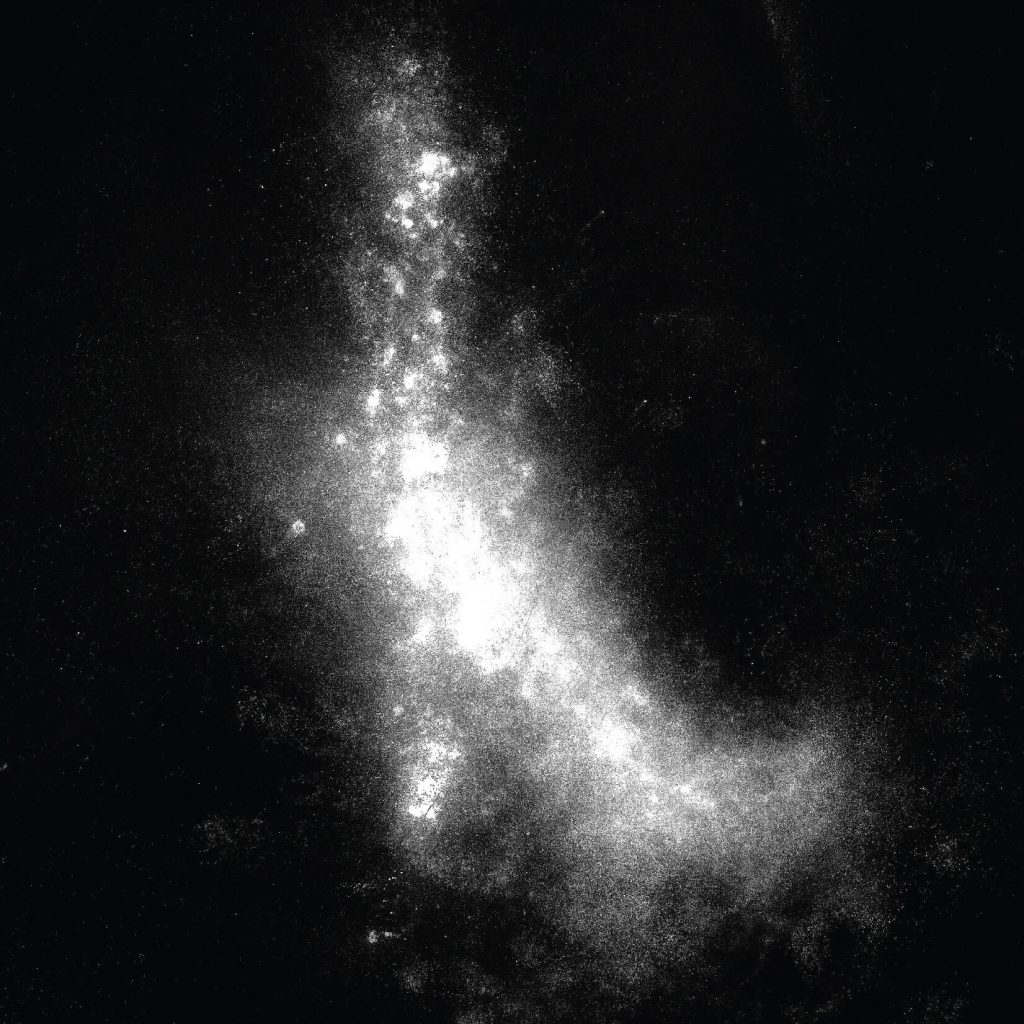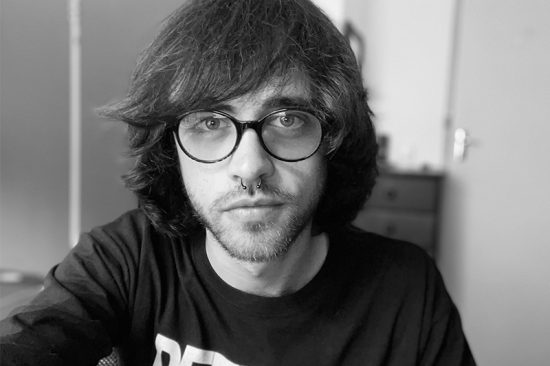
Abby Manchaca graduated from the University of Houston with a BFA in Graphic Design in 2023. She enjoys a mixture of analog and digital media for minimalistic, ephemeral, and thoughtful work. Experimentation and research in combination with creative writing are the drivers behind much of her portfolio. Abby continues to pursue passionate and informative self-initiated projects with the goal of melding the visual, auditory, and writing arts. She is currently employed at Herring Design in Houston, Texas.
“When I would go to make someone’s symbol—while listening to every song, it was hard not to think of the person who chose it, why they chose it, and how they feel when they’re listening to it.”
TPP45S Of the forty-five visuals you created, which is your favorite? Why?
ABBY MANCHACA I did create one [symbol set] for myself using my own music. That was my favorite. It was really cool to see [a visual representation of] the music that will always remind me of certain moments in my life. Everybody else who had their symbol made had the same experience of being like, “Wow, that’s mine.” Each mark was so unique, by the end of the project I knew everyone’s symbol set by heart. A lot of the participants in my project wanted to take home their papers and frame them.
TPP45S Which of your own set of symbols is your favorite?
ABBY MANCHACA I actually liked my love symbol more—that’s number four, I believe. It just represents something happy that happened to me—something good.

TPP45S What was your initial response looking at the Phaistos Disc?
ABBY MANCHACA I kind of like the mystery of it—of not knowing [the disc’s meaning] and then maybe someone finding out what it means later.
TPP45S Will the Phaistos Disc be more or less meaningful if the code is cracked?
ABBY MANCHACA I think they [the symbols] are in some ways more meaningful when you are able to put your own interpretation onto them. It can sometimes be more relatable when you’re looking at something and you’re able to put your own thoughts and emotions onto it rather than knowing exactly what it’s supposed to be. Similar to how I imagine someone might view my project from the outside—seeing a [visual] language you don’t understand but you still have a feeling about [what it means.]
TPP45S Why do you think an artifact from the past could be relevant to you and your creative practice?
ABBY MANCHACA I think when we look back on things that other people thought were important and have survived for so long, we, right now, realize we are making something that will eventually exist in the past.
TPP45S For Our Sound Imprint fifteen individuals were asked to choose two songs—one they associated with a painful memory and one they associated with a happy memory. This project transferred the chosen songs into images. However, some symbols combine the two songs into one visual. In your artist statement, you wrote this hybrid symbol represents “the individual themselves.” Why do you feel the combined song symbols are the best representation of the project’s participants?
ABBY MANCHACA The combined symbols bring these two feelings together—the love and the pain—and so it’s also bringing those two parts of a person together. And that’s a part of the human experience—holding both.
TPP45S What is the one song you associate with a loving memory and the one you associate with a painful memory?
ABBY MANCHACA The loving memory song—Nick Hakim’s “Happen”—I first heard it when I started dating my partner who I’m still with now. We really bonded over music—and still do. I was going through a rough patch at the time, and when she showed it to me it just felt like letting go—I just enjoyed the moment I was in and the person I was with.
And for my pain song—“Hallucinate” by Oliver Riot—for four or five years of my life I struggled with an eating disorder. I had finally started going to therapy and from the beginning to the end of the recovery process music was my best distraction and escape. This song and artist in particular, I think, reflected what I felt back to me. Hearing someone else sing about their fatigue and vulnerability helped me feel these emotions in myself. I would encourage anyone struggling to find one thing that helps ground them and lean into it.
TPP45S To create your forty-five symbols, you chose to trace crushed charcoal over an amplifying device as it played each of the participants’ songs. Why did you opt to use charcoal to create your own images of the songs instead of using visuals from their digital audio files?
ABBY MANCHACA It took some experimenting to find the right method to get the right visual result. I went with charcoal because it was a non-traditional way of visually representing a song.
When I was doing this project, I knew I had to be respectful of what I was asking the participants. There was a certain level of vulnerability in asking fifteen people for these personal song choices. I felt like the best way to honor that was through: one, being present in what I was making and two, interpreting our songs (and, by extensions, ourselves) in a unique way. When I would go to make someone’s symbol —while listening to every song, it was hard not to think of the person who chose it, why they chose it, and how they feel when they’re listening to it.
Also, getting my head out of a computer and experimenting with real materials was incredibly rewarding.


TPP45S Music has long been an essential part of the human experience. How do you think it will continue to influence designers’ works in the future?
ABBY MANCHACA I think it’s not as explored as other areas of design. Music and design are often seen as separate because of the mediums that they exist in—the visual versus the auditory. But they should be combined—I think they create a new experience together that isn’t as strong with just one or the other. And I think as designers it’s our job to intersect mediums that further each other, especially those that aren’t as commonly explored.

TPP45S What do you believe are the biggest challenges of this upcoming generation of visual artists/designers?
ABBY MANCHACA Time. We live in a really fast age where we barely have enough time to do our own self-initiated projects. And getting away from the expectation that projects have to be linear, when really experimentation and thoughtful work take a lot of time.
TPP45S Do you have any advice for emerging designers on how to overcome this challenge?
ABBY MANCHACA I think just finding little spaces of time to just go and do it—just sitting down and doodling, doing anything handcrafted that inspires you. Fill your littlest spaces of time with doing something that you enjoy. It doesn’t have to be for a project, it can just be something that is creative that is all yours.
TPP45S What does your project tell audiences of today and tomorrow about our current anthropocene and human impact on our planet? Do you think it tells audiences a lot about music in our current age?
ABBY MANCHACA I do. I think people are pretty obsessed with music right now and that music is becoming more available to everyone. And I mean, I think it’s a great thing—being able to access music from anywhere at any point in time. And I don’t want to say there’s too much curation going on—but [with the rise of online music platforms] I do think that we have this power to curate exactly what we want to listen to. But even then, we don’t have control over which of the songs will be part of our lives forever. And so, I think music is still in control of itself in that way. And that its direct connection to us is how it makes us feel—no matter what songs Spotify tells us we should be listening to.
TPP45S The humans who created the Phaistos Disc—if it’s not a hoax—will never be able to tell us what its forty-five symbols mean. But you are here with us today, to talk about your own set of forty-five symbols. What is it that you hope people take away from your project?
ABBY MANCHACA To think about what song they would have chosen for their love song and their pain song. And to be more reflective on what music they listen to—I think your music says a lot about you. People need to think more about how the things they’re listening to have impacted their lives.
[And] Like my girlfriend said earlier. She said—you’re not there to say anything profound. You’re just there to say something true. And I think that was exactly what this project is about.

Abby Manchaca
Abby Manchaca graduated from the University of Houston with a BFA in Graphic Design in 2023. She enjoys a mixture of analog and digital media for minimalistic, ephemeral, and thoughtful work. Experimentation and research in combination with creative writing are the drivers behind much of her portfolio. Abby continues to pursue passionate and informative self-initiated projects with the goal of melding the visual, auditory, and writing arts. She is currently employed at Herring Design in Houston, Texas.
Our Sound Imprint
Honorary Mention Open Call 22/23


